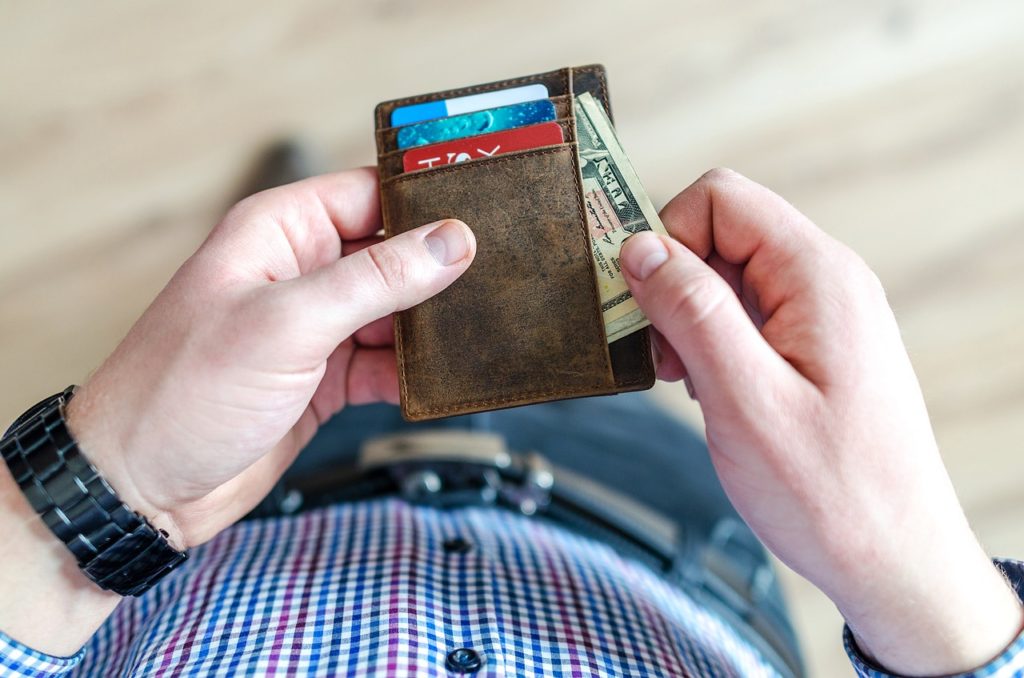
Contributor: Youth Care clinical team member Ryan Poling, M.A.
For a substantial portion of Americans, shopping is a way of life. Advertisements, door-buster sales, even the grand architecture of our cathedral-like shopping malls are all a testament to the power of the Almighty Dollar.
“Retail therapy” is even touted as a tongue-in-cheek cure for boredom, stress, and depression. Black Friday, one of the largest shopping times of the year, included 133.7 million shoppers who spent a total of $50.9 billion in 2014, almost doubling the amount spent in 2005, according to the National Retail Federation. [1]
While many people are able to keep their shopping and buying within reasonable limits – allowing for the occasional impulse purchase here and there – a substantial number of people find themselves unable to keep their shopping in check.
Researchers estimate that between 5 and 16 percent of people struggle with some form of shopping addiction. [2]
Referred to using various terms like “pathological buying,” “shopping addiction,” and “compulsive shopping,” these “shopaholics” can find themselves running up tens of thousands of dollars in debt, causing strain on their relationships and impairing their ability to function effectively in everyday life.
Although a shopping addiction is often not viewed as being equally dangerous as addictions to alcohol, meth, crack cocaine, or other drugs, the reality is that compulsive shopping behavior can have many of the same toxic effects as any other addiction.
Finding Treatment for Shopping Addiction
As with any other addiction, compulsive shopping is almost impossible to overcome without the help of a trained professional. That being said, treatment for compulsive shopping often looks different from treatment for chemical dependence or other addictions.
For example, the first stage of treatment for substance addictions is typically a detox period during which a person has the opportunity to allow his or her body to flush out any remaining drugs that may be in his or her system.
Naturally, in the case of a shopping addiction, there are no external chemicals from which a person must “detox,” so this process is skipped. The primary method of treating a shopping addiction is with a combination of individual and group therapy, building budgeting and financial skills, and changing habits and environments.
Therapy
 Therapy is typically the cornerstone of an addiction treatment program, and shopping addiction treatment is no different. In the case of compulsive shopping, therapy can primarily help to uncover the underlying issues that encourage pathological buying.
Therapy is typically the cornerstone of an addiction treatment program, and shopping addiction treatment is no different. In the case of compulsive shopping, therapy can primarily help to uncover the underlying issues that encourage pathological buying.
For example, financial advisor Robert Pagliarini encourages those struggling with a shopping addiction to identify the thoughts, emotions, or situations that can trigger an urge to shop and also examine the role that shopping plays in a person’s life.
Does shopping allow for community, or feelings of being important, or excitement, or something else? [3]
Both Pagliarini and therapist Angela R. Wurtzel, M.A., M.F.T., agree that once a person has identified the needs that shopping addresses, he or she can then find healthier ways of meeting those needs. [4] Other resources, such as Debtors Anonymous, can provide groups and regular support.
Skill-Building
In addition to therapy, people who struggle with pathological spending can often benefit from budgeting and skill-building. Simply seeing a breakdown of where a compulsive shopper’s money is going can sometimes be helpful.
In addition, developing one’s emotional intelligence by learning to recognize cycles of addiction, being aware of internal emotional reactions, and developing more effective coping strategies can all be tools to help a person manage compulsive shopping habits.
Changing Habits and Environments for Shopping Addiction
 Part of the reason compulsive shopping is so difficult to tackle is that a person’s daily life can actually reinforce the negative behavior. While a person’s habits can keep him or her in a cycle of shopping addiction, those same habits can be altered to reinforce healthy shopping behavior.
Part of the reason compulsive shopping is so difficult to tackle is that a person’s daily life can actually reinforce the negative behavior. While a person’s habits can keep him or her in a cycle of shopping addiction, those same habits can be altered to reinforce healthy shopping behavior.
One way of altering these habits is by setting rules for yourself and deciding on areas or activities that are off-limits, such as shopping malls or certain shopping websites. If your typical route to work takes you past your local shopping mega center, consider altering your drive slightly.
If online shopping is your primary struggle, you might consider setting up website blocking software on your computer, blocking the shopping sites you frequent, and then giving the blocking software password to a family member or trusted friend.
The point is to look at elements of your environment that make things more difficult for you and find changes you can make so that you are not solely reliant on your own willpower.
Though overcoming a shopping addiction can be a difficult, stressful, and costly struggle, with proper help from trained professionals, good skill-building, and changes in your habits and environment, you can maximize your chances of taking back control of your life and developing a healthier relationship with money.
References:
1. Black Friday Statistics and Trends. (n.d.). Retrieved 7 January 2015, from https://www.fundivo.com/stats/black-friday-statistics/.
2. Maraz, A., Griffiths, M.D., & Demetrovics, Z. (2015). The prevalence of compulsive buying: A meta-analysis. Addiction, n/a-n/a. doi: 10.1111/add.13223
3. Pagliarini, R. (2012). 5 ways to beat your shopping addiction. Retrieved 7 January 2016 from http://www.cbsnews.com/news/5-ways-to-beat-your-shopping-addiction/.
4. GoodTherapy.org. (2015). Compulsive spending/shopping. Retrieved 7 January 2016 from http://www.goodtherapy.org/learn-about-therapy/issues/compulsive-shopping.
About the author:
“Therapeutic Treatments for the Individual Struggling with a Shopping Addiction” was written by Youth Care clinical team member Ryan Poling, M.A. Ryan has experience working clinically with a wide range of populations and presenting concerns. He is a clinical psychology doctoral candidate and has also earned Master’s degrees in psychology and theology. He was an adjunct professor of psychology at Azusa Pacific University from 2012 to 2015.
Site Description:
Just south of Salt Lake City in Draper, Youth Care Treatment Center is Utah’s leading provider of life-changing residential and outpatient treatment for adolescents and teens of all genders who are struggling with mental health and substance use disorders. A licensed dual diagnosis facility, Youth Care Treatment Center helps young people who are suffering from mental health concerns such as bipolar disorder, depression, anxiety, and posttraumatic stress disorder, along with addiction to alcohol, opioids, and other substances.
The opinions and views of our guest contributors are shared to provide a broad perspective of addictions. These are not necessarily the views of Addiction Hope, but an effort to offer a discussion of various issues by different concerned individuals.
We at Addiction Hope understand that addictions result from multiple physical, emotional, environmental, and genetic factors. If you or a loved one are suffering from an addiction, please know that there is hope for you, and seek immediate professional help.
Published on February 9, 2016
Reviewed and Updated by Jacquelyn Ekern, MS, LPC on January 12, 2021
Published on AddictionHope.com
